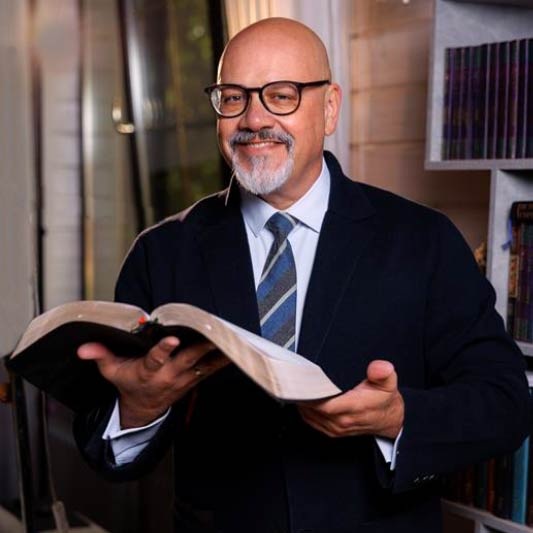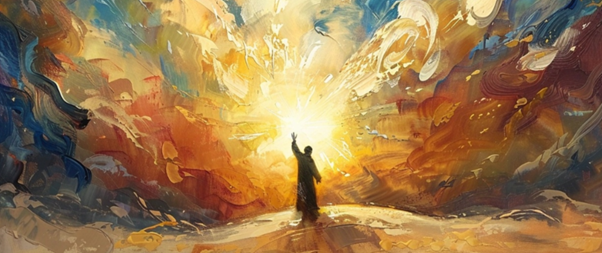The question of whom Cain married, as presented in Genesis 4:17, is one of the most enduring puzzles in biblical scholarship and popular curiosity. The text states, “Cain knew his wife, and she conceived and bore Enoch,” yet it provides no explicit details about her identity or origin. This omission, set against the backdrop of a narrative that mentions only Adam, Eve, Cain, Abel, and later Seth, prompts a cascade of questions: If Adam and Eve were the first humans, and Cain killed Abel, where did Cain’s wife come from? Who were the people Cain feared would kill him (Gen 4:14)? And how could he build a “city” (Gen 4:17) with such a small population? This essay examines two principal interpretations: the conventional perspective, which asserts that Cain married his sister, and a non-conventional perspective, which proposes the existence of other humans beyond Eden. Both perspectives are weighed against the biblical text, its historical context, and the theological implications.
The Traditional View: Cain Married His Sister
The traditional interpretation, deeply rooted in Jewish and Christian exegesis, holds that Cain’s wife was one of his sisters, a daughter of Adam and Eve. This view stems from the belief that Adam and Eve were the sole progenitors of humanity, as suggested by Genesis 3:20, which calls Eve “the mother of all the living” (אֵם כָּל־חָי, em kol-chai), and Genesis 5:4, which notes that Adam “had other sons and daughters” over his 930-year lifespan. Since no other human origins are mentioned, Cain’s wife is presumed to be a sibling, likely born after Abel’s death or unrecorded in the sparse narrative.
Biblical Support
The traditional view leans on several textual clues. Genesis 5:4 indicates that Adam and Eve had additional children beyond Cain, Abel, and Seth, providing a pool of potential siblings. The long lifespans of early humans—Adam’s 930 years (Gen 5:5), for instance—suggest ample time for population growth. Rabbinic and Second Temple Jewish texts reinforce this interpretation. The Book of Jubilees (4:11), a Second Temple text, explicitly names Cain’s wife as his sister Awan, while Genesis Rabbah 22:7 implies intermarriage among Adam’s children. These sources, while not canonical for most Christians, reflect early Jewish efforts to resolve the question within the framework of a single human origin.
The narrative sequence in Genesis 4:9–17, however, poses challenges. After Cain kills Abel, God confronts him, and Cain laments, “Whoever finds me will kill me” (Gen 4:14, מִי שֶׁיִּמְצָאֵנִי יַהַרְגֵנִי, mi she-yimtza’eni yahargeni). He then settles in Nod, marries, and builds a “city” named Enoch (Gen 4:17, וַיִּבֶן עִיר וַיִּקְרָא שֵׁם הָעִיר כְּשֵׁם בְּנוֹ חֲנוֹךְ, vayiven ir vayikra shem ha-ir k’shem b’no Chanokh). The term “city” likely refers to a modest settlement, but it still implies a population beyond Cain and his wife. The traditional view accounts for this by suggesting that Adam and Eve’s unrecorded children and grandchildren populated these early communities over time.
Strengths and Challenges
The strength of the traditional view lies in its simplicity and fidelity to the text’s apparent claim of a single human origin. Eve’s title as “mother of all the living” and the genealogical focus on Adam’s line (Gen 5) support the idea that all humans, including Cain’s wife, descend from this first couple. Theologically, this aligns with later New Testament teachings, such as Paul’s assertion in Romans 5:12–19 that sin and death entered through “one man” (Adam), implying a unified human lineage.
However, the view faces logistical and narrative hurdles. Genesis 4:9–17 reads as a compact sequence, with no explicit indication that decades or centuries elapsed between Abel’s death, Cain’s exile, and his marriage. For Cain to marry a sister, she would need to have been born and reached maturity, requiring a significant time gap not hinted at in the text. Cain’s fear of being killed by others (Gen 4:14) also raises questions: Who are these “others” if only his parents remain? The traditional response—that they are later-born siblings or nephews—requires assuming a rapid population growth within a short narrative window, which feels strained given the text’s brevity.
Another challenge is the moral question of sibling marriage. While incest is later prohibited in Mosaic law (Lev 18:9), the traditional view posits that such restrictions did not apply in the primordial era, as intermarriage was necessary for humanity’s survival. Genetic concerns about inbreeding are often addressed by suggesting that early humans, being closer to God’s original creation, had fewer genetic defects, though this is speculative.
The Non-Traditional View: Other Humans Beyond Eden
The non-traditional view proposes that Cain’s wife came from a population of humans existing outside the Garden of Eden, created by God but not made into his image and according to his likeness. This perspective challenges the assumption that Adam and Eve were the sole progenitors, suggesting instead that Genesis focuses on their unique role as God’s image-bearers in a sacred space (Eden), while other humans inhabited the broader world.
Biblical and Contextual Support
This view draws on textual ambiguities and the cultural context of Genesis’s original audience—Israelites recently freed from Egyptian slavery. Genesis 1:26–27 describes the creation of humanity (אָדָם, adam) in God’s image, using the plural “Let Us make mankind in Our image” (נַעֲשֶׂה אָדָם בְּצַלְמֵנוּ, na’aseh adam b’tzalmenu). The use of the plural (“Us”) has sparked debate: Is God speaking to a divine council (Ps 82:1), angels, or perhaps other humans already created? Some scholars argue that the absence of the definite article in Genesis 1:26 (אָדָם, generic “mankind”) contrasts with its presence in Genesis 1:27 and 2:7 (הָאָדָם, ha’adam, “the man”), suggesting a distinction between humanity at large and the specific creation of Adam and Eve.
The non-traditional view posits that Genesis 1:26–27 describes a broader creation of humanity, while Genesis 2:7–15 narrows to Adam and Eve’s unique formation in Eden, a sacred space possibly located on a mountain (Ezek 28:12–13). This aligns with ancient Near Eastern worldviews, where mountains were seen as divine-human meeting points. If Eden was a privileged locale, other humans could have existed elsewhere, providing Cain’s wife, the people he feared, and the population for his “city.”
The cultural context bolsters this view. Genesis was written for Israelites transitioning from Egyptian slavery to covenant life. In Egypt, only Pharaoh was considered divine or godlike, with commoners far removed from such status. Genesis subverts this by declaring all Israelites, through Adam and Eve, as God’s image-bearers (Gen 1:26–27). The narrative’s focus on Adam and Eve may thus be theological, emphasizing Israel’s identity, rather than a scientific account of human origins. The Israelites, preoccupied with survival and loyalty to God, likely cared little about whether other humans existed outside their story.
Archaeological and Theological Considerations
While the non-traditional view is less concerned with modern science, it finds resonance in archaeological findings. Discoveries of Neanderthals and other hominids, who coexisted with Homo sapiens and possibly interbred, suggest a complex human family tree. Though Genesis does not address such populations, the non-traditional view allows for their existence, interpreting Cain’s wife as a member of a broader human community.
Theologically, this view faces challenges, particularly with Genesis 3:20’s claim that Eve is “the mother of all the living.” Non-traditional interpreters offer two responses. First, Eve’s title may be covenantal, referring to her as the mother of God’s chosen lineage (like Abraham as “father of many nations,” Gen 17:5), not all humans biologically. Second, ancient Near Eastern texts often use hyperbolic lineage claims, and Genesis may similarly emphasize Adam and Eve as representative heads of humanity, not its sole originators.
A more significant hurdle is Paul’s theology in Romans 5:12–19, which ties universal sin and redemption to Adam. If other humans existed, how does Adam’s sin affect them? Non-traditional scholars might argue that Adam’s role is representative, not biological, akin to Christ’s role as the “second Adam.” However, this requires careful theological navigation to avoid undermining Paul’s framework.
Strengths and Challenges
The non-traditional view’s strength lies in its ability to address narrative gaps without requiring speculative time jumps. Cain’s wife, his fear of others, and his city are easily explained if other humans existed. It also aligns with the text’s theological focus on Israel’s identity and avoids modern preoccupations with scientific precision, which were foreign to the original audience.
However, it risks introducing complexity not explicit in the text. Genesis nowhere mentions other human creations, and Eve’s title as “mother of all the living” remains a significant counterpoint. The view also requires reinterpreting New Testament passages, which may feel like a stretch for those committed to a unified biblical theology.
Synthesis and Reflection
Both views grapple with the tension between the text’s sparseness and the reader’s desire for clarity. The traditional view preserves the simplicity of a single human origin, aligning with Genesis 3:20 and Romans 5:12–19, but struggles with the narrative’s compressed timeline and Cain’s fear of others. The non-traditional view resolves these issues by positing other humans, offering a contextually rich reading for Israel’s audience, but it introduces speculative elements and theological complexities.
The linguistic distinction between אָדָם (generic “mankind”) and הָאָדָם (“the man”) provides a potential bridge. If Genesis 1:26 describes a broader human creation and Genesis 2:7 focuses on Adam and Eve, the non-traditional view gains textual footing. Yet the Masoretic tradition’s preservation of both forms could simply reflect stylistic variation, not a theological distinction, leaving the debate open.
Ultimately, the question of Cain’s wife transcends mere historical curiosity. It invites reflection on how we read ancient texts—whether as moderns seeking scientific answers or as believers embracing a theological narrative. The traditional view anchors us in the text’s apparent unity, while the non-traditional view opens doors to a broader human story, resonant with Israel’s covenantal identity. Both call for humility, acknowledging the limits of our understanding.
Conclusion
The mystery of Cain’s wife—whether a sister born of Eve or a woman from a wider human creation—remains unresolved, yet it beckons us to marvel at Genesis’s profound depths, where every unanswered question draws us closer to the heart of our Creator. The traditional view offers a straightforward path, rooted in Adam and Eve’s sacred role as the fountainhead of all humanity, reminding us of God’s intimate design for a unified family under His grace. The non-traditional view, meanwhile, envisions a vast world beyond Eden, harmonizing narrative clues with the ancient Israelites’ journey toward covenantal identity, and whispering of a God whose creation is even more expansive than we can fathom.
Rather than demanding a definitive answer, the text invites us to stand in reverent awe before the Almighty, who masterfully weaves humanity’s story through veils of mystery and threads of meaning. As we ponder Cain’s wife, let us not merely seek to unravel the enigma but to surrender to the One who holds all beginnings in His eternal hands—trusting that every shadow in Scripture points toward the radiant light of His redemptive love. In this sacred ambiguity, we find hope: a promise that the God who guided Israel through wilderness and exile will illuminate our own paths, preparing our hearts for the greater glories ahead. May this pursuit deepen our worship, filling us with joyful anticipation of the day when all mysteries dissolve in the fullness of His presence, and we behold the Author of life face to face.






For those who begin to count with 1 and not with 0 it might be an unsolvible dilemma…but for those people, who don’t count but just believe in the beginning of men and endless story the dilemma will be not a problem, but a solution as a given reason of believing.
Thank you for sharing, Frank!